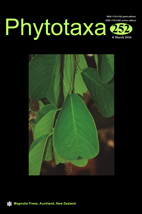Abstract
A new smut fungus, Sporisorium capillipedii-alpini (Ustilaginales), and a new species of grass, Capillipedium alpinum (Poaceae), on which it is growing, are described and illustrated. The collections were made in western Sichuan, China. Capillipedium alpinum differs from other species of Capillipedium by its diminutive size and short, slender inflorescence. Sporisorium capillipedii-alpini is compared with the species of Sporisorium with similar symptoms (destroying all spikelets of an inflorescence) that infect Capillipedium, Botriochloa, and Dichanthium. The new smut fungus differs from these species as follows: from Sporisorium taianum by having larger spores with minutely echinulate spore walls, from S. dichanthicola by having larger spores, from S. sahayae by having lower spore wall ornamentation and thinner spore walls, from S. andropogonis-annulati by having larger spores, and smaller sterile cells with thinner walls, and from S. mysorense by possessing minutely echinulate spore walls and differently colored spores and sterile cells. The types of S. andropogonis-annulati, S. mysorense, and S. sahayae were re-examined and detailed descriptions of these species are given. A key to the smut fungi of Sporisorium, that infect Capillipedium, Botriochloa, and Dichanthium and destroy all spikelets of the inflorescence of an infected plant, is also provided.

